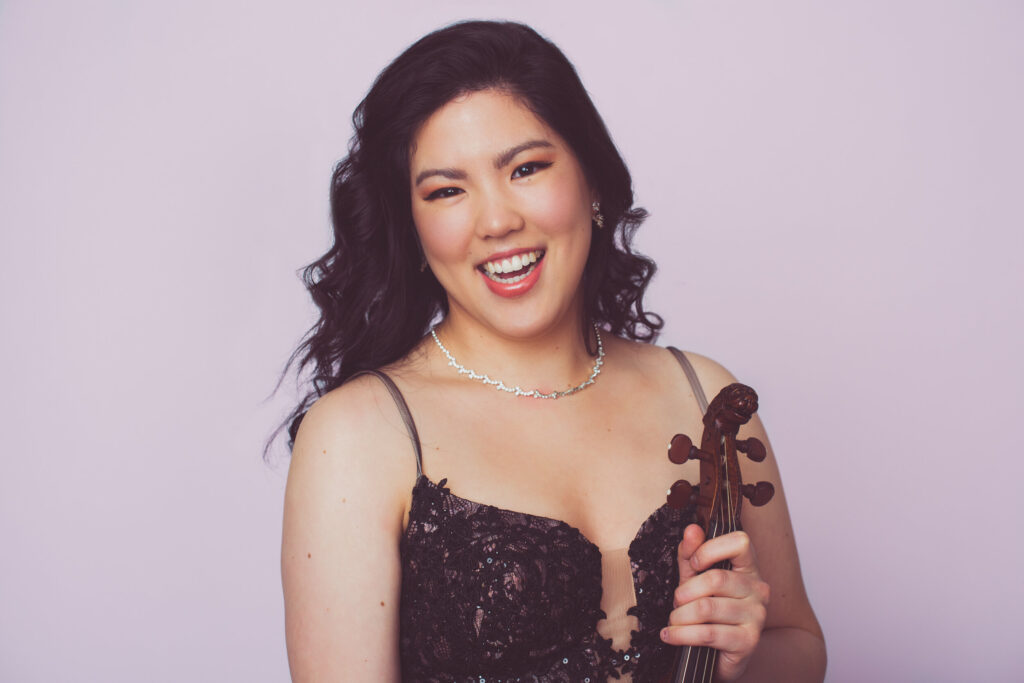Violinist Wong provides the highlight of ACO’s “Romantic Fantasy” season finale

The ankle bone’s connected to the leg bone, the leg bone’s connected to the hip bone—and yes, in music, the Classical era’s connected to the Romantic era.
As if to illustrate that point, the American Classical Orchestra, New York’s senior period-instrument ensemble, closed its current season Thursday night in Alice Tully Hall with a program titled “Romantic Fantasy,” offering an assortment of 19th-century music by Rossini, Grieg, Schumann and Sarasate.
In his customary comments from the stage, the orchestra’s founder and music director Thomas Crawford implied that the group’s instruments and style may have been updated to reflect its venture into a later period, but offered few specifics. The printed program didn’t describe the pieces at all, much less the means of production.
So one was left to wonder why principal cellist Myron Lutzke’s touching solo to open Rossini’s William Tell Overture was having trouble getting across the footlights. Soon enough, though, distant timpani thunder and flute raindrops heralded the gathering storm, which the orchestra then plunged into with gusto.
Gonzalo Ruiz’s English horn sounded the all-clear with the pastoral “Ranz des vaches,” competing with a rather loud background of bassoons and horns. Conductor Crawford opted for a moderate tempo in the famous closing galop, but a rhythmically right-on performance gave it momentum.
The evening of “now for something completely different” continued with a somber Nordic song, “Den Bergtekne” (The Mountain Thrall) by Edvard Grieg. In a forward baritone with more than a little Fischer-Dieskau ache in it, Enrico Lagasca gave a dramatic portrayal of the traveler lured to his doom by an elf princess, while low strings loomed like the “Elfstones” of the poem.
The transition from this dark scene to Schumann’s sunny Symphony No. 1, “Spring,” was eased by a mini-lecture from Crawford, with the orchestra playing excerpts from the work to illustrate the transformations of its opening motto through the four movements.
Following a stately opening brass call, the symphony’s first movement moved along to a snappy dotted rhythm, though energy tended to sag in the softer passages. The movement finished strong, with a vibrant chorale theme in the strings and a lively coda.
Schumann’s orchestration has been much criticized for its thickness and opacity, and on Thursday the Larghetto suffered particularly from those traits, as horns and winds covered the tender melody in the strings. The air cleared considerably for the Scherzo, with its swinging main theme, bright dialogue between strings and winds in the first trio, and Beethoven-like clarity and vigor in Trio II.
The finale was “animato e grazioso,” just as Schumann indicated, with a Mendelssohnian lightness to its dainty violin theme, and charming woodwind interjections. The music rose to a hearty roar in the tutti passages; loud or soft, Crawford kept the momentum going. On this night at least, Schumann’s accelerando coda generated more excitement than William Tell.
For excitement, of course, few things can beat a good violinist in Sarasate’s Carmen Fantasy. Thursday’s concert had a very good violinist in Rachell Ellen Wong, whose credentials in both early music and more recent repertoire made her an obvious choice to headline Thursday’s era-crossing program.
A smiling and relaxed presence onstage, Wong refreshingly treated Sarasate’s finger-tangler as a piece of music, a flight of fancy, not just a vehicle for a conservatory A or competition gold. Her warm yet clear tone and pinpoint intonation even in the highest positions matched contemporary descriptions of the Spanish violinist’s own playing.
Wong reveled in the vigor of the Aragonaise from Bizet’s opera, slipping into octaves and harmonics as easily as a favorite pair of jeans. The Habanera was equal parts sultry and playful, with sliding double stops and saucy left-hand pizzicato.
A quiet interlude brought a freely shaped song and delicate dialogue with orchestral winds. The Seguidilla danced in a bouncy three-to-a-bar, marked by fleet scales from the soloist. For a finale, Wong lit the fuse on the whirling “Gypsy” Dance and rocketed all over her instrument, with a smile and a flick of the bow.
The brevity of Sarasate’s suite left ample room for encores, but despite persistent applause and several returns to the stage, Wong offered none. One dazzling and musically satisfying performance would have to do.
The American Classical Orchestra’s 2023-24 season, conducted by Thomas Crawford, opens with violinist Augusta McKay Lodge and music of Mozart and Beethoven, Nov. 16 at Alice Tully Hall. aconyc.org